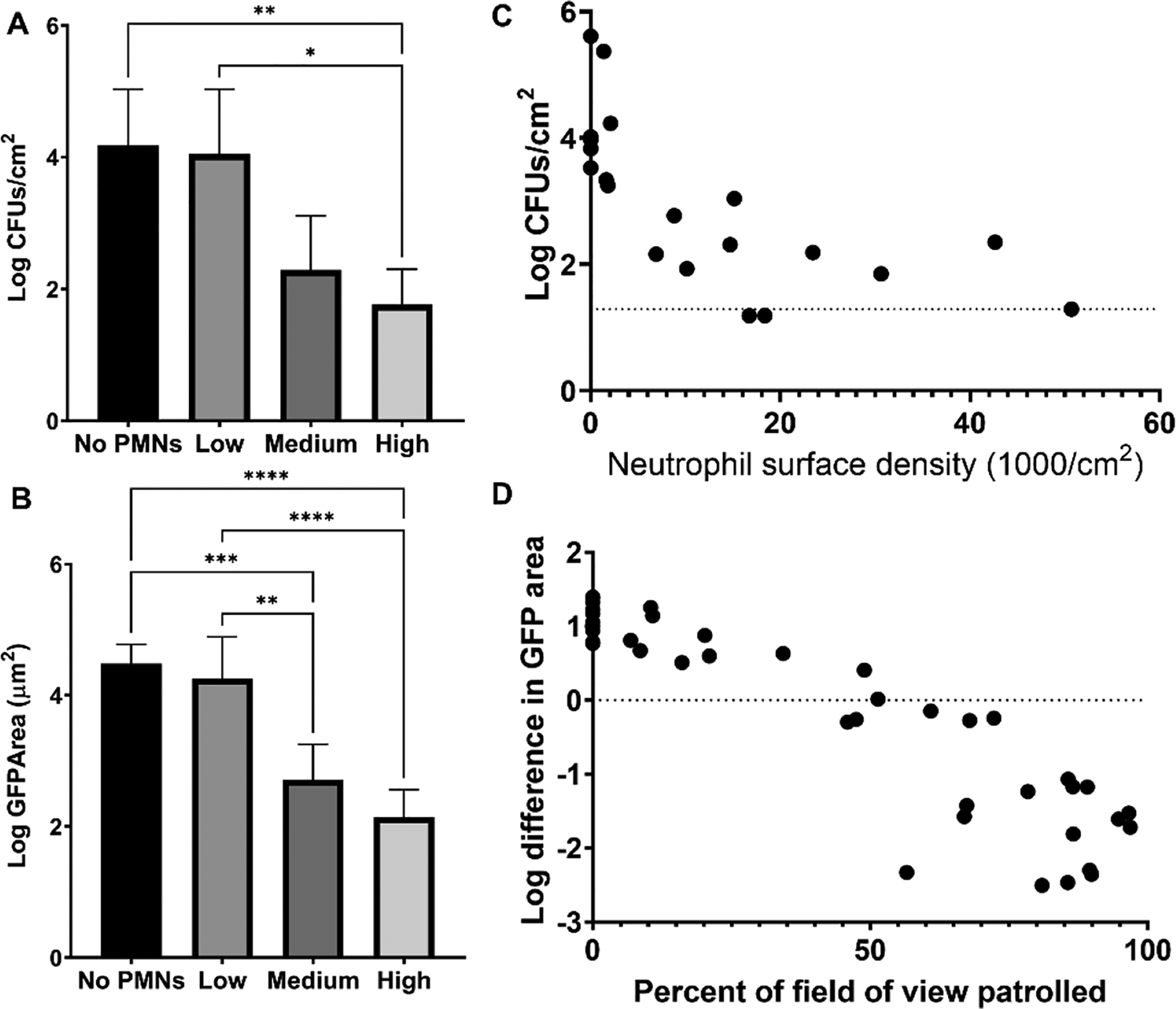Figure 1:

High neutrophil densities are required for adequate clearance of attached S. aureus in vitro. Approximately 2×103 CFUs/cm2 S. aureus GFP were initially added to the surface and challenged with PMNs for 4 h. (A) S. aureus CFUs recovered and (B) total remaining GFP signal from wells with no, low (1.7 ± 0.27 × 103 PMNs/cm2), medium (1.0 ± 0.31 × 104 PMNs/cm2), or high (2.8 ± 1.3 × 104 PMNs/cm2) numbers of PMNs. Data are mean ± SD (n=4–7. Kruskal-Wallis Test (panel A) and one-way ANOVA with Tukey’s post hoc test (panel B) **p<0.01, ***p<.001, **** p<0.0001). (C) CFUs recovered from challenge plotted against varied neutrophil surface densities. Dashed line represents limit of detection. n=5 independent experiments. (D) Log difference in GFP area per field of view as a function of the percentage of the field of view covered by neutrophil tracks. n=40 FOVs from 5 independent experiments.
